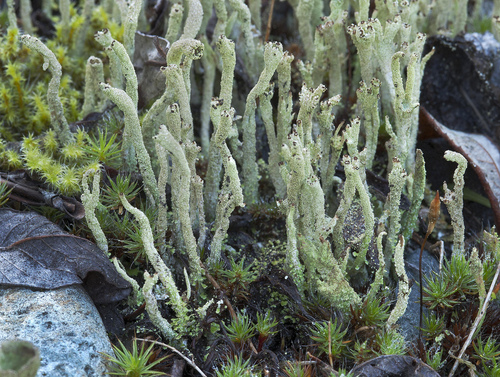Click on Characteristic name for explanation. Click on image for larger version.
|
Cladonia cenotea
| Overview
| | PNW Range: | | | West side | Rare
| | East side | Common
| | Immediate coast | Rare
| | Alpine or subalpine | Uncommon
| | Habitat: | Cool moist forests from valleys to subalpine, in both shaded and semi-open habitats.
| | Substrate: | Rotten logs, tree bases, and humus-rich soil.
| | Comments: |
| | Synonymy: | none
|
|

Habit
|
|
|
|
|